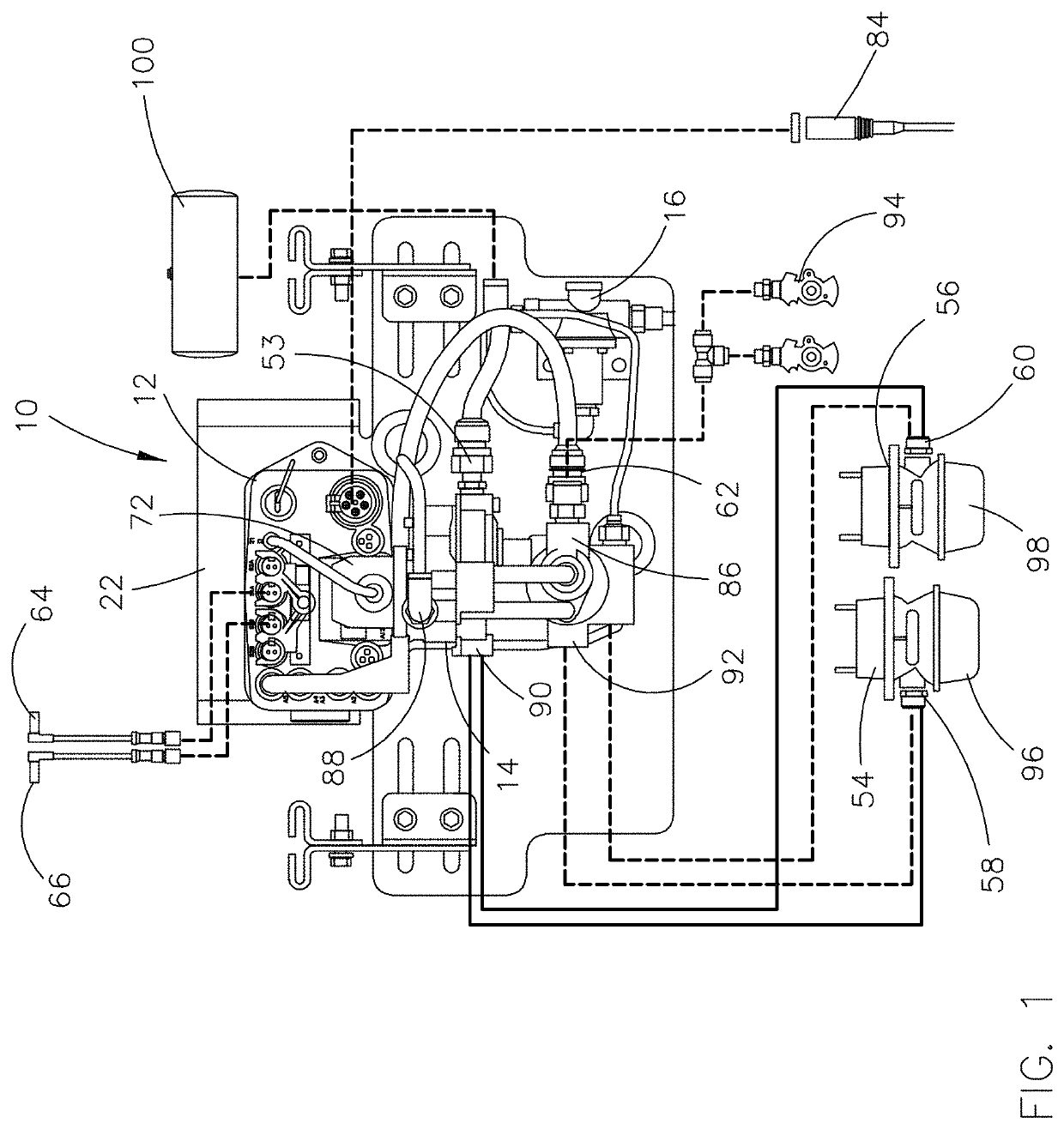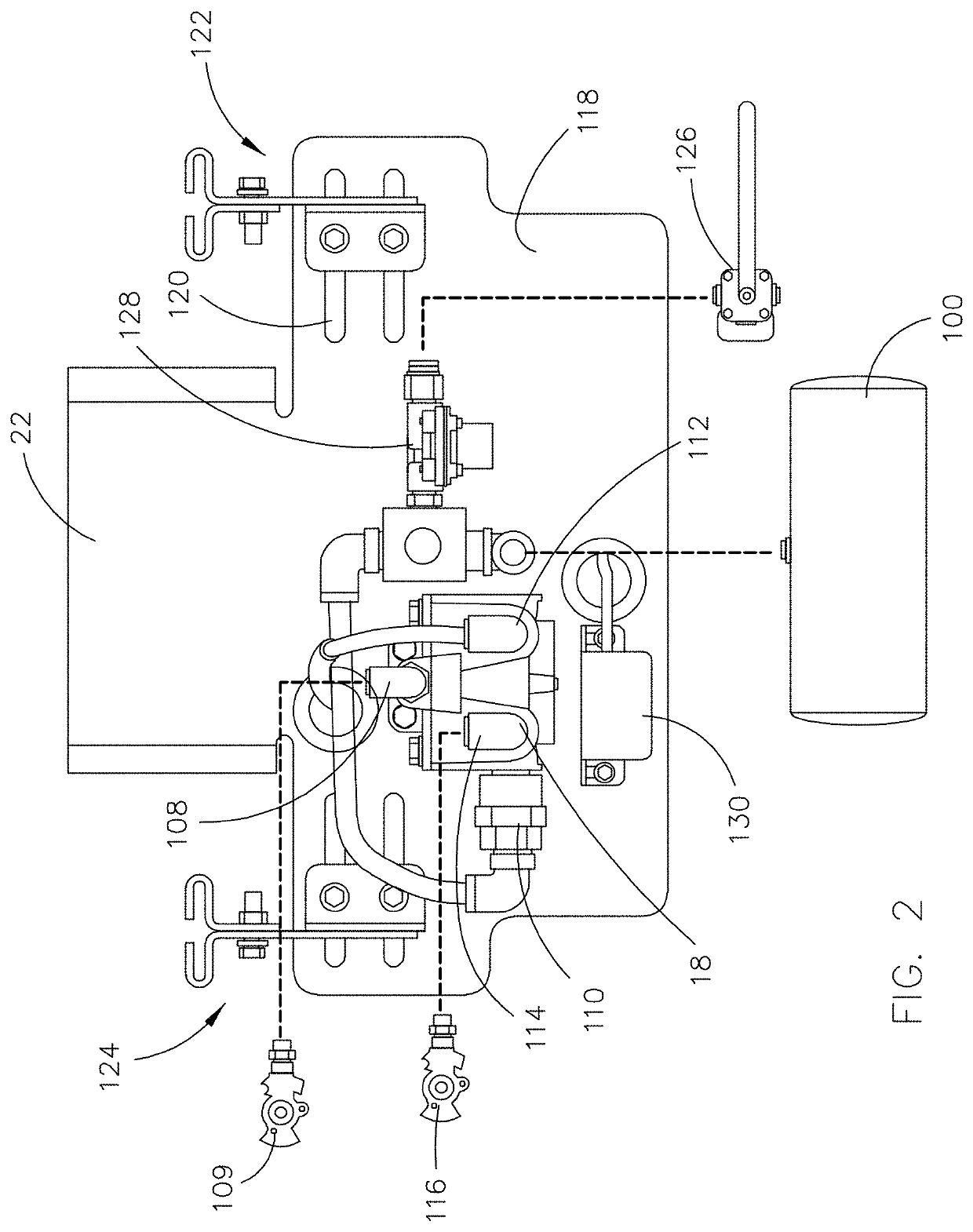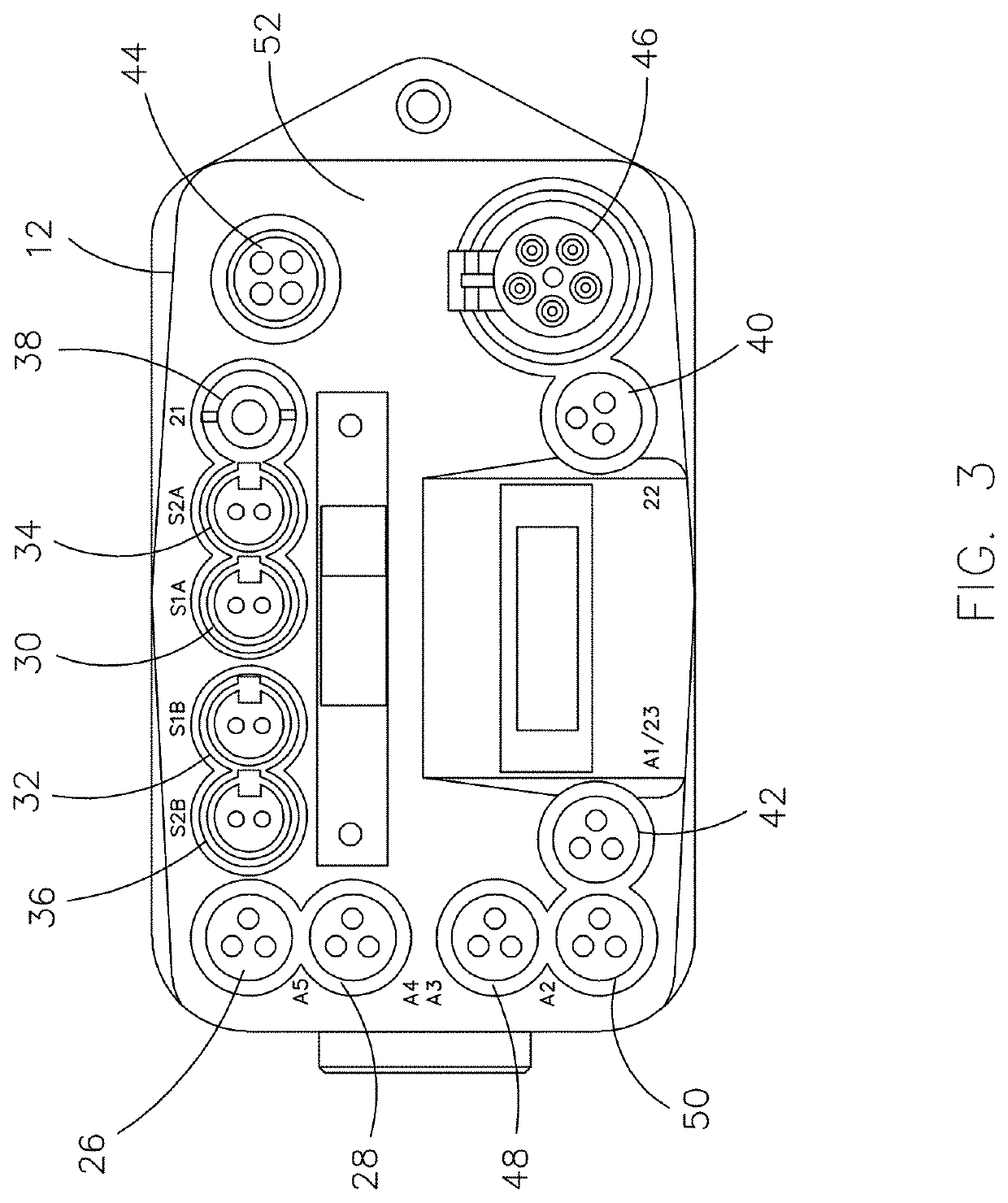Modular trailer system
a trailer system and module technology, applied in the direction of braking systems, vehicular safety arrangements, pedestrian/occupant safety arrangements, etc., can solve the problems of brake drag, system will not provide information to the driver regarding the efficiency of the braking system, and substantial leakage of compressed air
- Summary
- Abstract
- Description
- Claims
- Application Information
AI Technical Summary
Benefits of technology
Problems solved by technology
Method used
Image
Examples
Embodiment Construction
[0041]A trailer brake and monitoring system in accordance with one embodiment of the invention described herein is identified generally with the reference numeral 10 in FIG. 1. The trailer brake and monitoring system includes a trailer control module 12, a brake valve 14, a reservoir purge valve 16, a booster valve 18 (FIG. 2), a communications device 20 (FIG. 4), and a mounting bracket 22 to which the trailer control module 12, brake valve 14, reservoir purge valve 16, and booster valve 18 are mounted.
[0042]Referring to FIG. 6, the trailer control module 12 includes a processor 24 that is electrically coupled with, configured to receive data or instructions from, and configured to transmit data or instructions to: a brake supply pressure input 26, a brake control pressure input 28, a first wheel speed input 30, a second wheel speed input 32, a third wheel speed input 34, a fourth wheel speed input 36, a first valve output 38, a second valve output 40, a third valve output 42, a con...
PUM
 Login to view more
Login to view more Abstract
Description
Claims
Application Information
 Login to view more
Login to view more - R&D Engineer
- R&D Manager
- IP Professional
- Industry Leading Data Capabilities
- Powerful AI technology
- Patent DNA Extraction
Browse by: Latest US Patents, China's latest patents, Technical Efficacy Thesaurus, Application Domain, Technology Topic.
© 2024 PatSnap. All rights reserved.Legal|Privacy policy|Modern Slavery Act Transparency Statement|Sitemap



